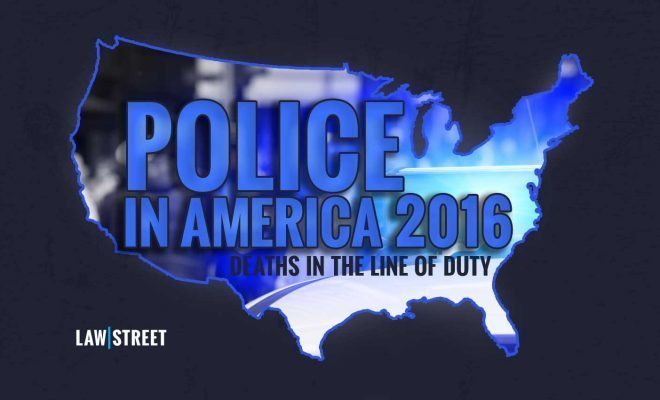 Image copyright Law Street Media
Image copyright Law Street Media
Crime
Police in America 2016: What We Know About Officer Deaths in the Line of Duty
The FBI recently released a snapshot of law enforcement officer deaths in 2015, indicating that such deaths decreased last year. But that is only a small subset of the available information on officer deaths. Now that policing has reached the center of the public’s attention, statistics about what happens to officers while they’re on duty are sure to be an important part of the debate.
Interactive Map: Officer Assaults and Employment by State
The FBI publishes an annual report on Law Enforcement Officers Killed and Assaulted in the Line of Duty (LEOKA), which can provide some interesting insights into the matter and inform debates about police deaths. The annual LEOKA publication is one of the most detailed data sets kept by the FBI. For obvious reasons, it’s important for the FBI and all law enforcement agencies to keep track of and understand the situations in which police officers are killed and assaulted.
Here’s what the FBI data tells us:
More Officers Die from Accidents than Felonies

Source: FBI LEOKA 2014 | Includes Preliminary 2015 Data
The chart above details the number of officer deaths from both accidents and felonies between 2005 and 2015. The average number of felonious deaths during that 11 year period is about 50, while the average number of accidental deaths is just below 60. Last year saw particularly low numbers for both felonious and accidental deaths, with 41 and 45 respectively.
The data can also tell us a lot about the causes of these deaths. Nearly 60 percent of accidental deaths that occurred between 2005 and 2014 were the result of automobile accidents. If you broaden the category to include motorcycle and aircraft accidents they account for more than 70 percent in total.
The chart below details the trends over time:

Source: FBI, LEOKA and *Preliminary 2015 Data
There has been a slight downward trend in both felonious and accidental police officer deaths. The preliminary numbers for 2015 are also encouraging, as the number of accidental deaths tied its 10-year low with 45, and the number of felonious deaths matched the second lowest point in the same period at 41. Law enforcement deaths in the line of duty is certainly an important thing to track, but when it comes to assessing the threat that officers face every day, looking at assault statistics can be particularly informative.
What We Know About the Offenders

Source: FBI, LEOKA – Table 47
The FBI keeps detailed information on both victims and offenders, allowing felonious offenders to be broken down by race, sex, and several other categories. Between 2005 and 2014, there was a total of 563 offenders involved in felonious officer deaths. When you break those numbers down by race, 309, or 55 percent of the known offenders are white and 224, or 40 percent are black. Asian/Pacific islanders, Native Americans, and offenders whose race was not reported account for less than 2 percent each.
Offenders are also overwhelmingly male–nearly 97 percent of known offenders are men. The vast majority–83 percent–have also had prior criminal arrests and just over one-quarter of all offenders were under some form of judicial supervision.
Assaults and Injuries have Been Decreasing

Source: FBI, LEOKA – Table 76
Assaults on police officers have generally trended downward over the past 10 years. After peaking at 61,257 in 2007, the total number of assaults has decreased to 48,315 in 2014, a decrease of more than 20 percent. The chart above also details the number of officers who sustained injuries from an assault. All injury numbers are estimates–based on percentages provided by the FBI–with the exception of 2014, which is the exact number recorded by the FBI.
The number of assaults that caused injuries also followed a downward trend, with approximately 16,866 in 2007 and 13,654 in 2014. Although the number of injuries has not dropped as quickly as the total number of assaults, this is certainly an encouraging sign for police officers.
Moving Forward
The 2015 assault and injury statistics, which will be released later this year, will be particularly interesting in light of recent discussion of the so-called “Ferguson effect,” in which some argue that the perceived threat to law enforcement officers has caused proactive policing to decline and crime rates to go up. These numbers will also help inform the debate on the alleged “war on police,” a related argument in which some claim that officers are being attacked more as protests and movements like Black Lives Matter have called more attention to issues surrounding police violence.
Based on the preliminary numbers for felonious deaths, that does not appear to be the case. But we do not yet know whether increased scrutiny is correlated with an increase in assaults. As the chart above indicates, the number of assaults has gone down steadily over the past several years, but in time, we’ll know if 2015 is an exception.








Comments